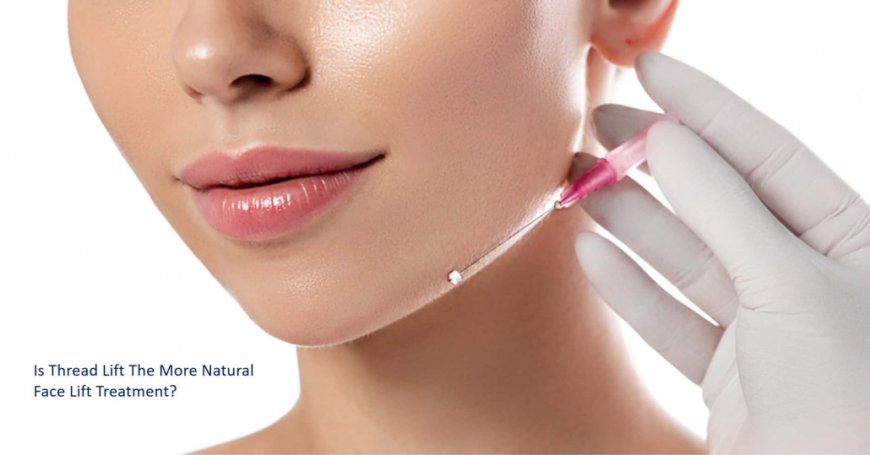Can I eat normally after thread lift ?

Can I Eat Normally After a Thread Lift?
Thread lift procedures have gained immense popularity for their ability to provide non-surgical facial rejuvenation. With minimal downtime, this procedure helps lift sagging skin and smooth out wrinkles, giving a youthful appearance. However, many patients wonder about their post-procedure diet and if they can eat normally after undergoing a thread lift. Here, we delve into this important topic, offering a comprehensive guide for anyone considering or recovering from this innovative treatment.
A thread lift is a minimally invasive cosmetic procedure designed to lift and tighten sagging skin on the face and neck. Using dissolvable threads, this technique stimulates collagen production, offering a natural and rejuvenated look. The treatment is a popular choice for those seeking a less invasive alternative to a surgical facelift, with shorter recovery times and fewer risks. If you’re considering a Thread Lift in Islamabad, it’s essential to understand how to care for yourself post-procedure, including dietary considerations.
Eating After a Thread Lift: What to Know
After undergoing a thread lift, your skin needs time to heal and adjust to the threads placed beneath the surface. While the procedure itself does not impose strict dietary restrictions, following some general guidelines can help ensure optimal results and a smoother recovery.
Avoid Hard and Chewy Foods
Immediately after the procedure, your face may feel tender, and the treated areas might be slightly swollen. Chewing hard or tough foods like steak, raw vegetables, or nuts can strain the facial muscles, potentially impacting the positioning of the threads. Soft foods such as soups, mashed potatoes, yogurt, and smoothies are better choices during the initial recovery phase.
Stay Hydrated
Hydration is crucial for overall healing and skin health. Drink plenty of water to keep your skin hydrated and support the body’s natural healing process. Avoid beverages that can cause dehydration, such as alcohol and caffeinated drinks, especially during the first 24-48 hours.
Minimize Spicy and Acidic Foods
Spicy and acidic foods can irritate your mouth and facial tissues, potentially exacerbating any discomfort or swelling. Opt for bland and mild foods during the initial recovery days to prevent unnecessary irritation.
Foods to Include for Faster Recovery
Incorporating specific nutrients into your diet can promote faster healing and enhance your results:
- Protein-Rich Foods: Foods like eggs, fish, and chicken provide the essential building blocks for tissue repair and collagen production.
- Vitamin C-Rich Fruits and Vegetables: Oranges, strawberries, and bell peppers support collagen synthesis and reduce inflammation.
- Omega-3 Fatty Acids: Found in salmon, walnuts, and flaxseeds, these help reduce swelling and promote skin health.
- Leafy Greens: Spinach and kale are rich in antioxidants, which support the healing process and protect the skin from free radicals.
How Long Should You Follow These Dietary Guidelines?
For most patients, sticking to these dietary recommendations is only necessary for the first week or so after the procedure. Once any swelling or tenderness subsides, you can gradually return to your regular diet. However, it’s essential to listen to your body and consult your doctor if you have concerns about specific foods or symptoms.
Other Post-Procedure Tips for Optimal Recovery
In addition to dietary considerations, follow these tips to ensure a smooth recovery after your thread lift:
- Avoid touching or rubbing your face unnecessarily.
- Sleep on your back with your head elevated to minimize swelling.
- Avoid strenuous activities and heavy lifting for at least a week.
- Follow your doctor’s recommendations for skincare products and avoid harsh treatments during the recovery phase.
The Importance of Following Post-Treatment Guidelines
Adhering to your post-procedure care instructions, including dietary modifications, ensures that the threads remain in place and heal properly. Failure to follow these guidelines may compromise your results and prolong recovery.
The Cost Factor
The affordability of this procedure often influences the decision to opt for it. If you’re curious about the cost of Thread Lift Treatment in Islamabad, rest assured that it offers a cost-effective solution compared to surgical alternatives. Discussing your options with a reputable clinic can provide clarity and help you plan accordingly.
Choosing the Right Clinic for Your Thread Lift
Your choice of clinic and practitioner significantly impacts the success of your thread lift. Royal Cosmetic Surgery Clinic in Islamabad is renowned for its expertise in performing thread lift procedures, offering personalized care and excellent results. Their team ensures you’re well-informed about the treatment, including post-procedure care, to achieve the best outcomes.
Conclusion
In most cases, patients can return to eating normally within a week after a thread lift. However, adhering to a soft-food diet and avoiding hard, chewy, or irritating foods in the initial recovery phase is crucial. Prioritize hydration and nutrient-rich foods to speed up healing and maximize the benefits of your treatment.
Whether you’re considering a thread lift for the first time or are already planning your procedure, choosing the right clinic is key to achieving your aesthetic goals. Royal Cosmetic Surgery Clinic in Islamabad offers state-of-the-art thread lift treatments tailored to individual needs. Schedule a consultation today to begin your journey toward a rejuvenated appearance!
What's Your Reaction?












![Noots Focus Reviews [Truth Exposed 2025]!](https://news.bangboxonline.com/uploads/images/202501/image_430x256_678e3b94881a1.jpg)
![Vivalis Male Enhancement: The Must-Know Ingredients [2025 Update]](https://news.bangboxonline.com/uploads/images/202501/image_430x256_678e3b54e396c.jpg)






